
Business Hours 9:00 AM - 6:00 PM
Reservation

Business Hours 9:00 AM - 6:00 PM
Reservation

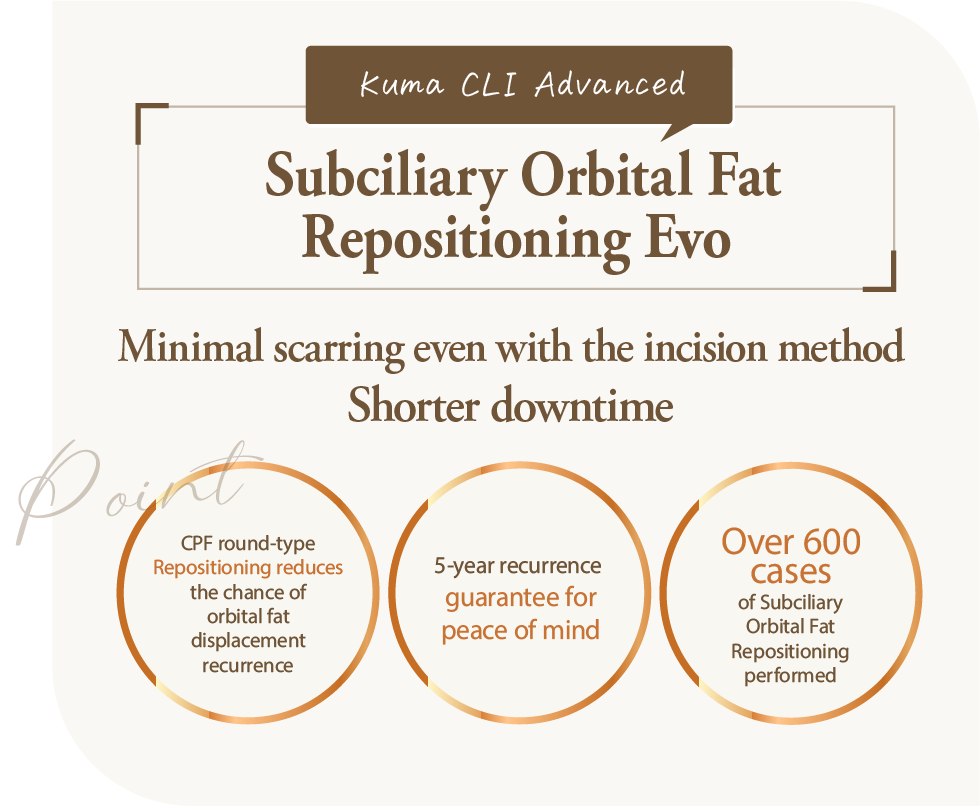
If you are concerned about under-eye dark circles,please feel free to consult us first.
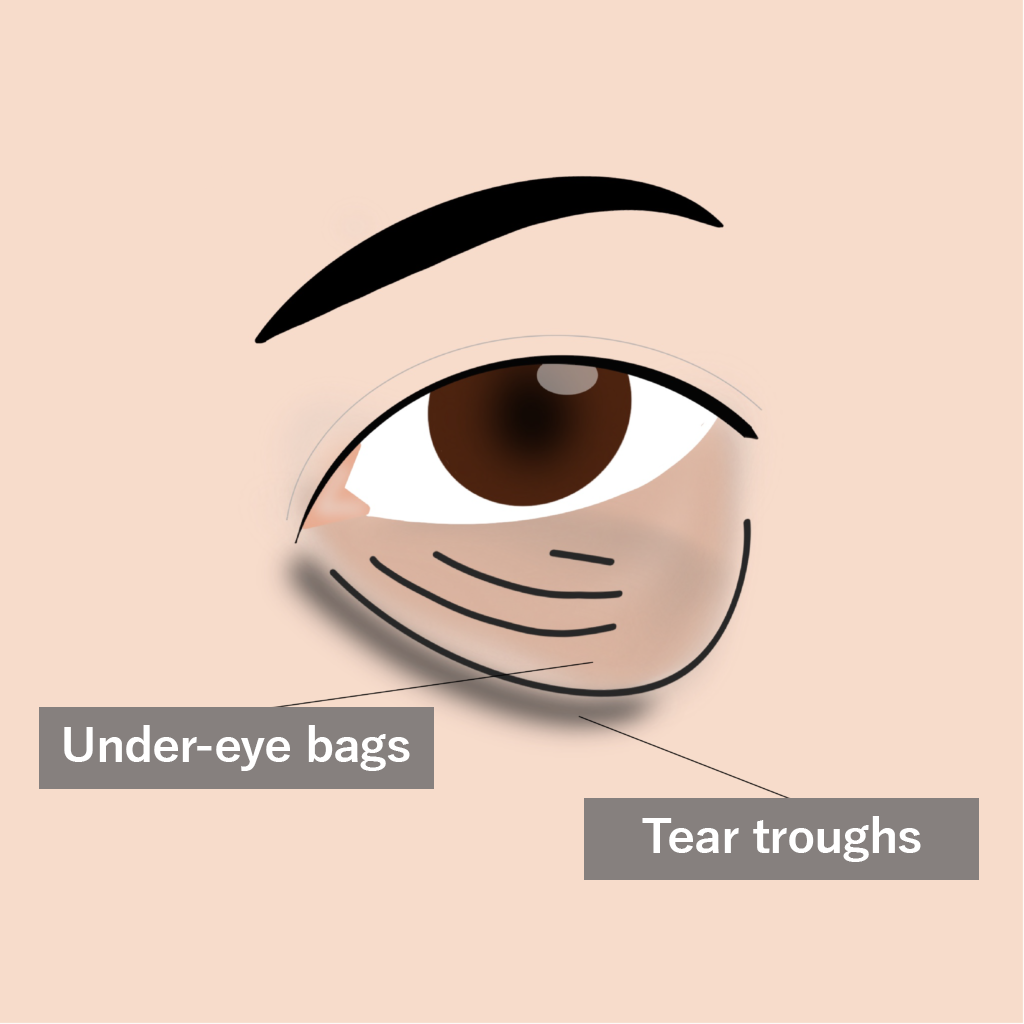
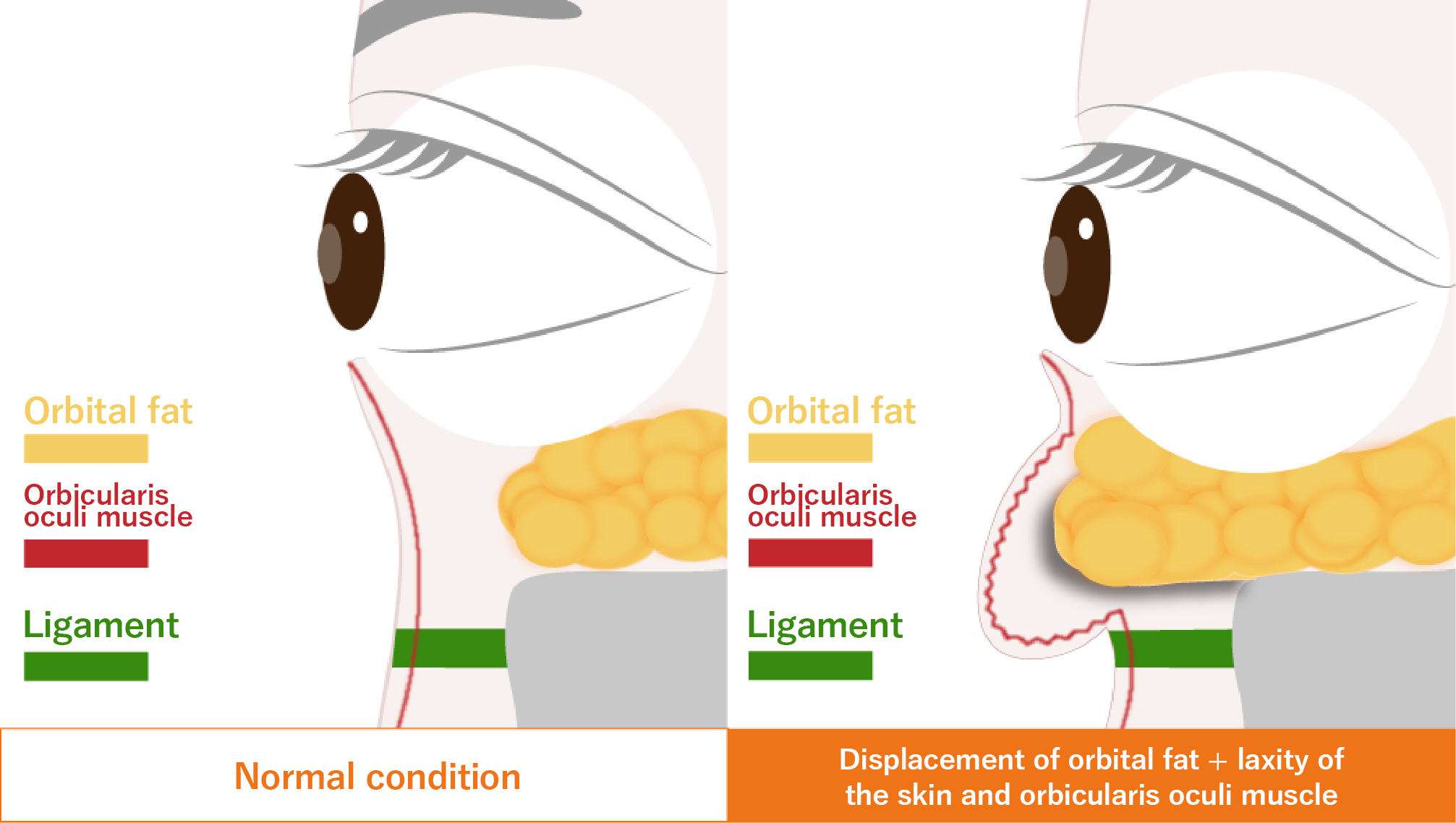
Under-eye sagging is not only caused by the forward displacement of orbital fat but also by the loosening of excess skin and the orbicularis oculi muscle with aging, which leads to sagging under the eyes. Strong grooves, also called “Gorgo lines,” are another factor, influenced by lower eyelid ligaments.

These concerns may be resolved with Subciliary Orbital Fat Repositioning.
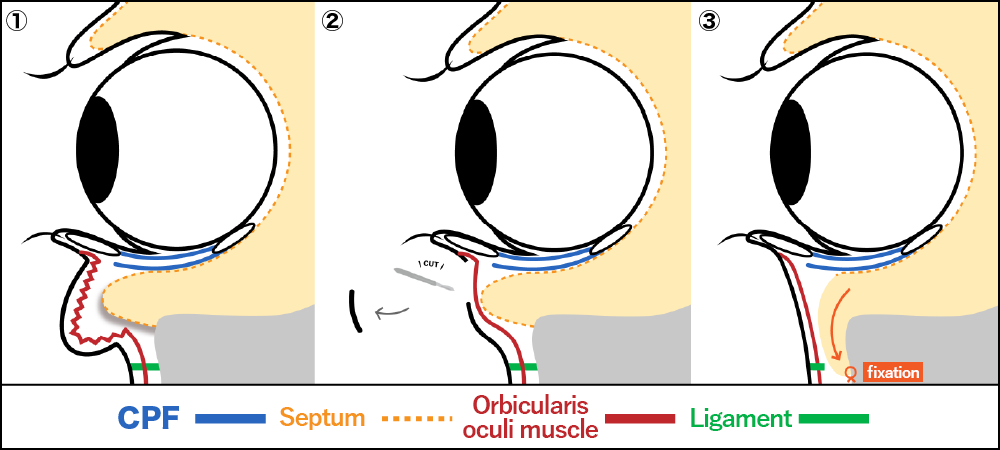
Subciliary Orbital Fat Repositioning is a surgical method performed through an incision just beneath the lower eyelashes. It not only corrects the forward displacement of orbital fat and the tear trough (nasojugal groove) under the eyes, but also allows for the simultaneous removal of sagging excess skin and tightening of the loosened orbicularis oculi muscle. The incision scar typically becomes inconspicuous within about two weeks. At our clinic, we further enhance this procedure by sealing the protruding orbital fat with the anterior leaflet of the CPF (capsulopalpebral fascia), which helps prevent recurrence.
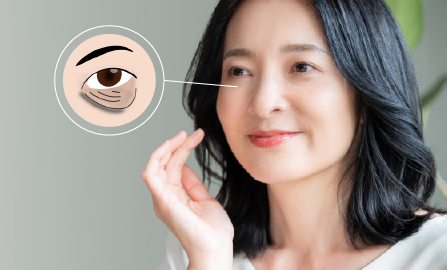
An incision is made just beneath the lower eyelid to remove any excess skin. By tightening this area, sagging and horizontal wrinkles are smoothed out, giving the eyes a more youthful appearance.
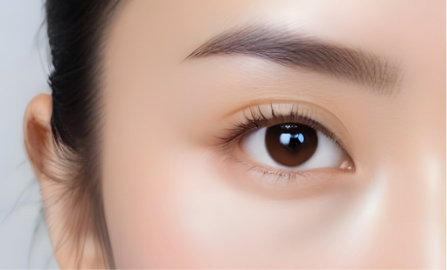
Protruding orbital fat is repositioned to under-eye hollows, correcting both issues simultaneously.

Unlike simple fat removal, this method includes measures to prevent recurrence, providing long-term effects.
Subciliary Orbital Fat Repositioning can perform recurrence-preventive treatments that simple fat removal cannot achieve. While it cannot stop the natural aging process under the eyes, taking measures to prevent recurrence allows for long-term results.
People with many wrinkles caused by stretched skin.
Individuals in their 50s and older.
Those seeking long-term results.
Those who want a natural appearance.
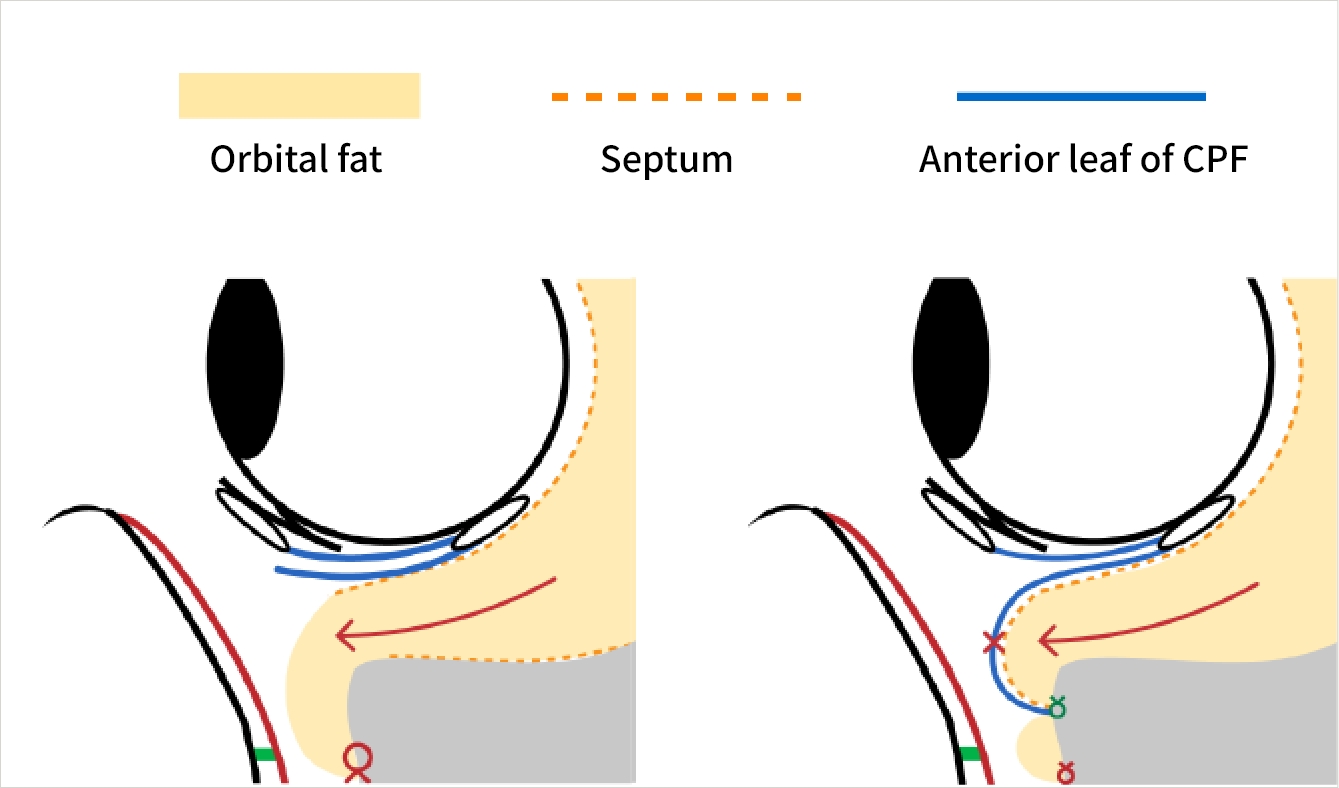
CPF round-type repositioning enhances recurrence prevention.
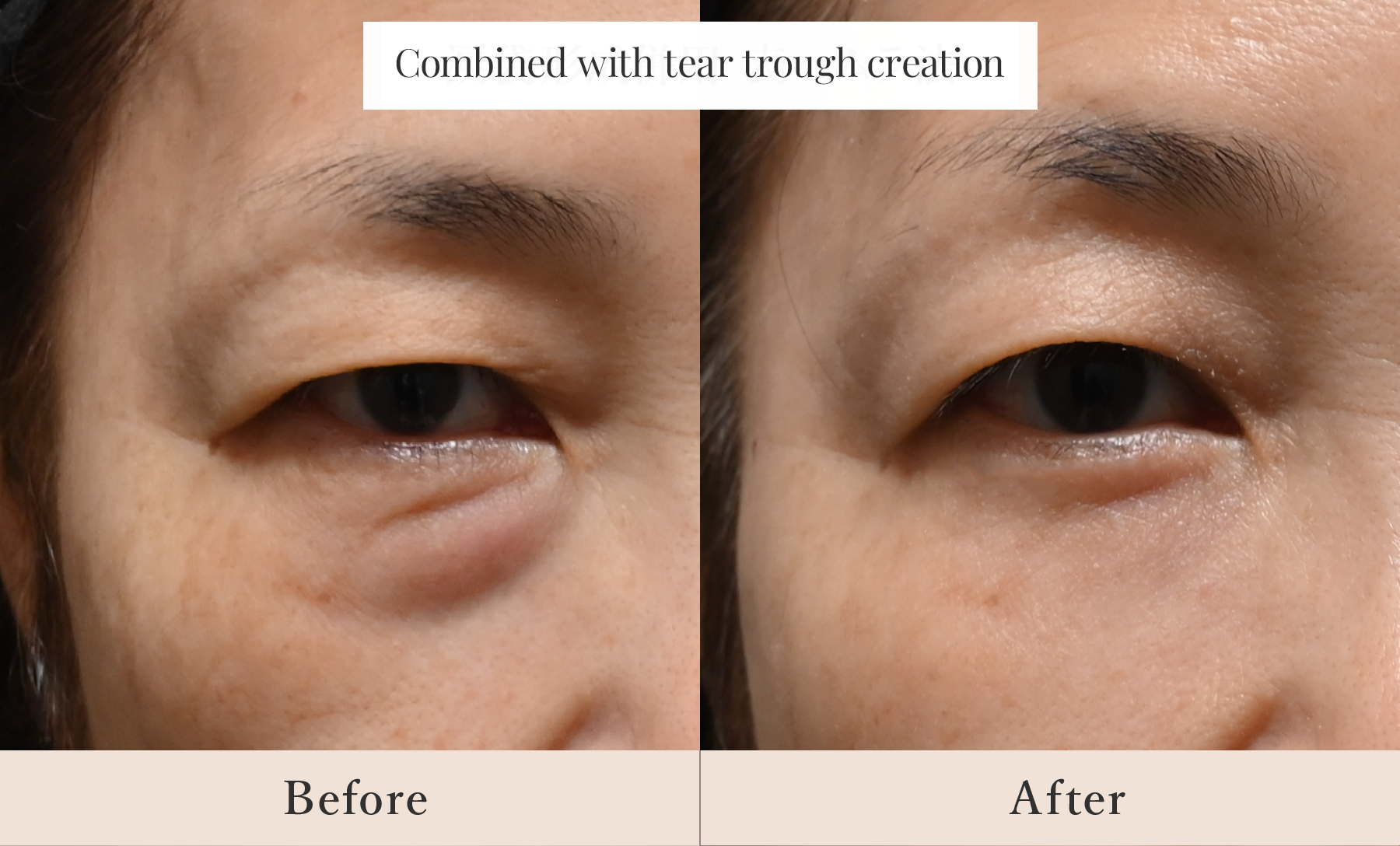
Combined with tear trough creation.
Maintains a natural, three-dimensional look under the eyes.
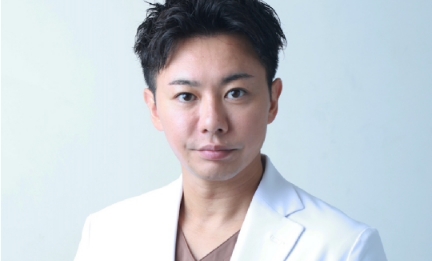
We offer peace of mind with the industry’s longest 5-year guarantee.
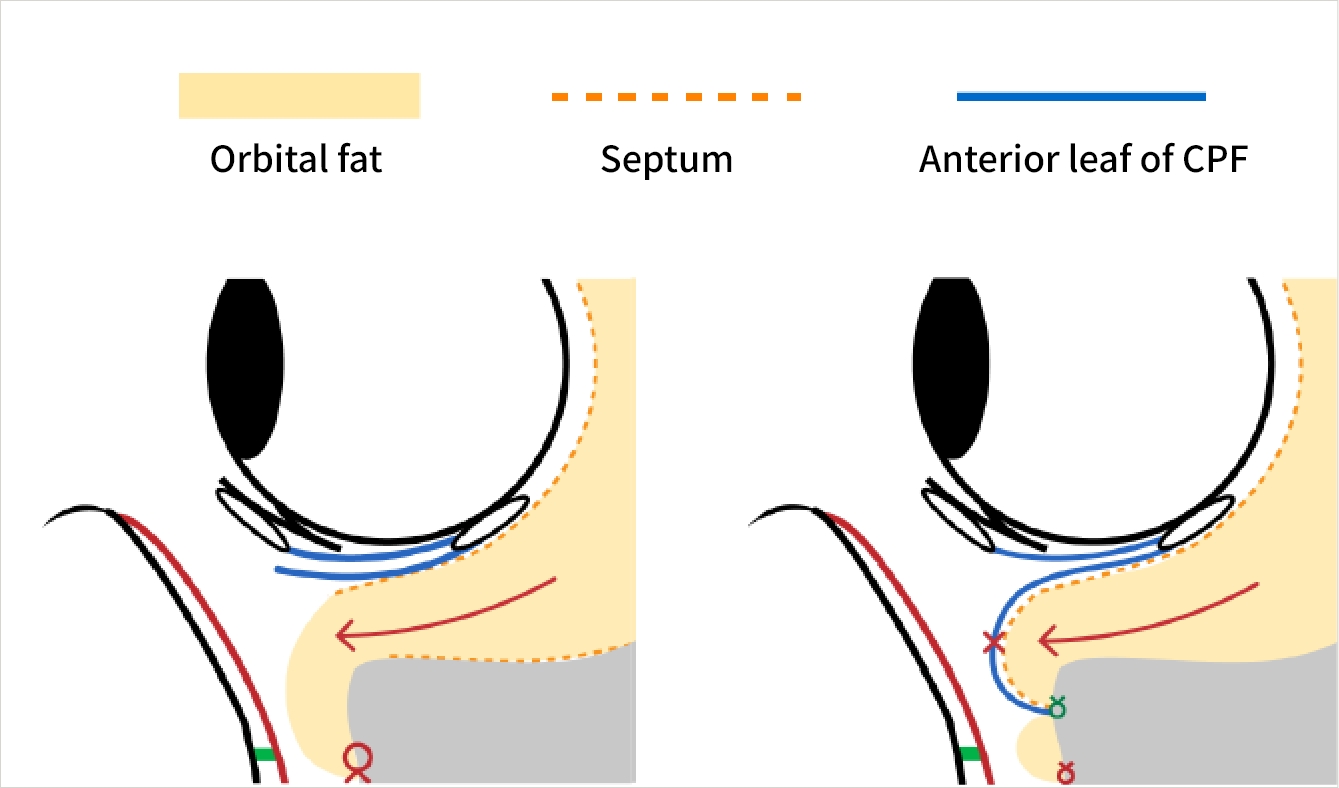
Displacement of orbital fat due to aging can continue to progress even after treatment. Rather than using a simple recurrence-prevention method that only tightens the thin membrane surrounding the orbital fat, our technique employs the thicker anterior leaflet of the CPF (capsulopalpebral fascia) to seal the “exit” of the herniated fat. This prevents postoperative fat protrusion and makes recurrence less likely.

Some patients worry that the Subciliary Orbital Fat Repositioning might eliminate their tear trough. At our clinic, we perform the procedure in a way that preserves the tear trough, maintaining its natural appearance.*This technique does not increase the size of the tear trough.
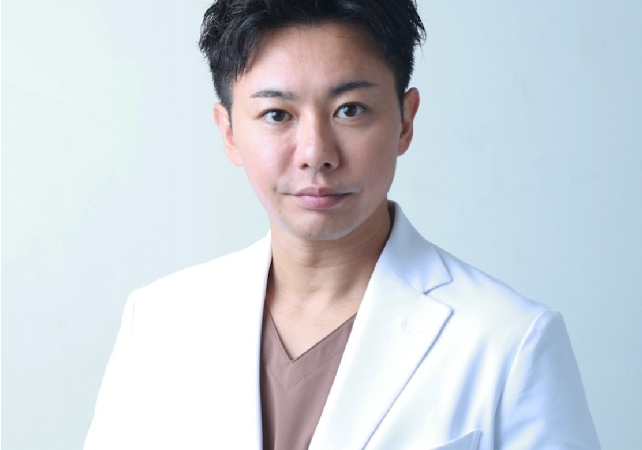
We are extremely confident in the results of our procedure, which is why we offer a 5-year recurrence guarantee.
At Kuma CLI, we perform CPF round-type repositioning, taking particular care to prevent recurrence.
That is why we have established a 5-year guarantee system. In fact, we believe the preventive effects can last well beyond five years.
*This guarantee covers the recurrence of orbital fat hernia.It applies if the doctor determines that a recurrence has occurred.Any necessary treatment, including local anesthesia, will be provided free of charge.
If you are concerned about under-eye dark circles,please feel free to consult us for a counseling session first.
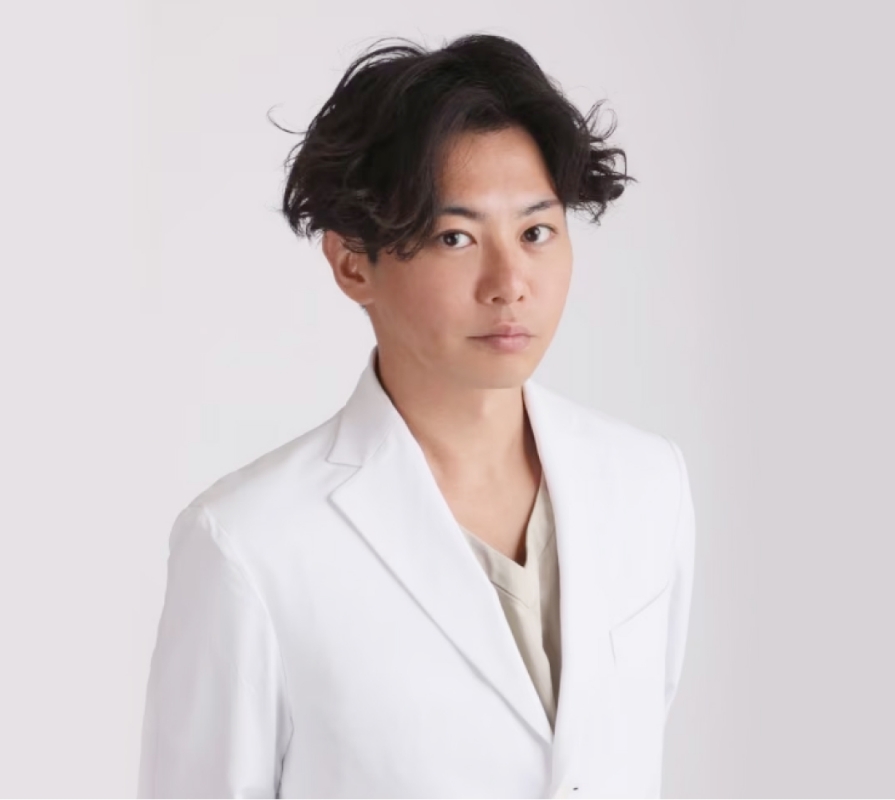
Over 500 Subciliary Orbital Fat Repositioning cases.
High skill and recurrence prevention are possible due to the large number of cases.
Winner of the national “Best Transconjunctival Orbital Fat Repositioning under-eye procedure” among 371 doctors in the group.
A continuously refined method focusing on both beauty and durability.
Case photos of Subciliary Orbital Fat Repositioning
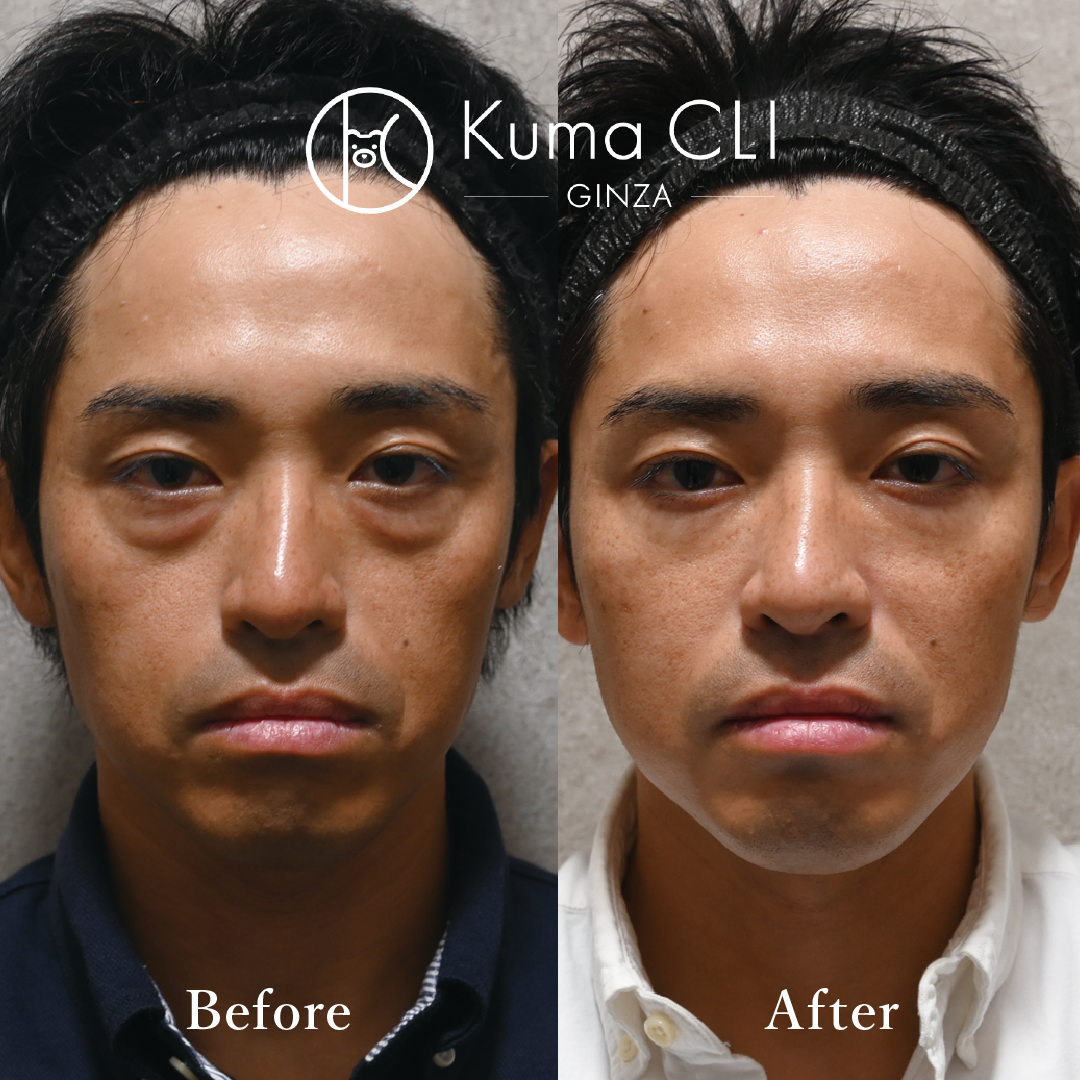
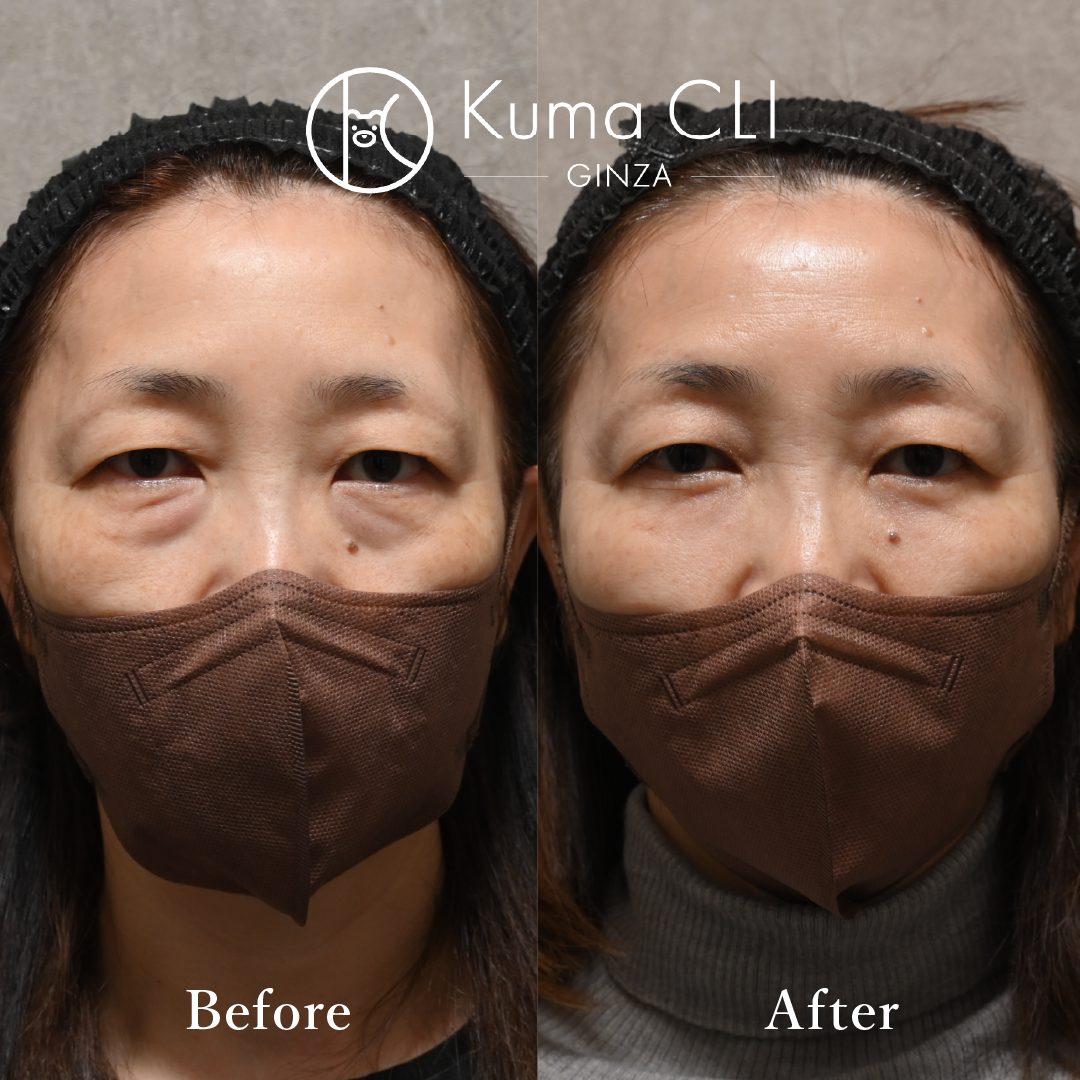
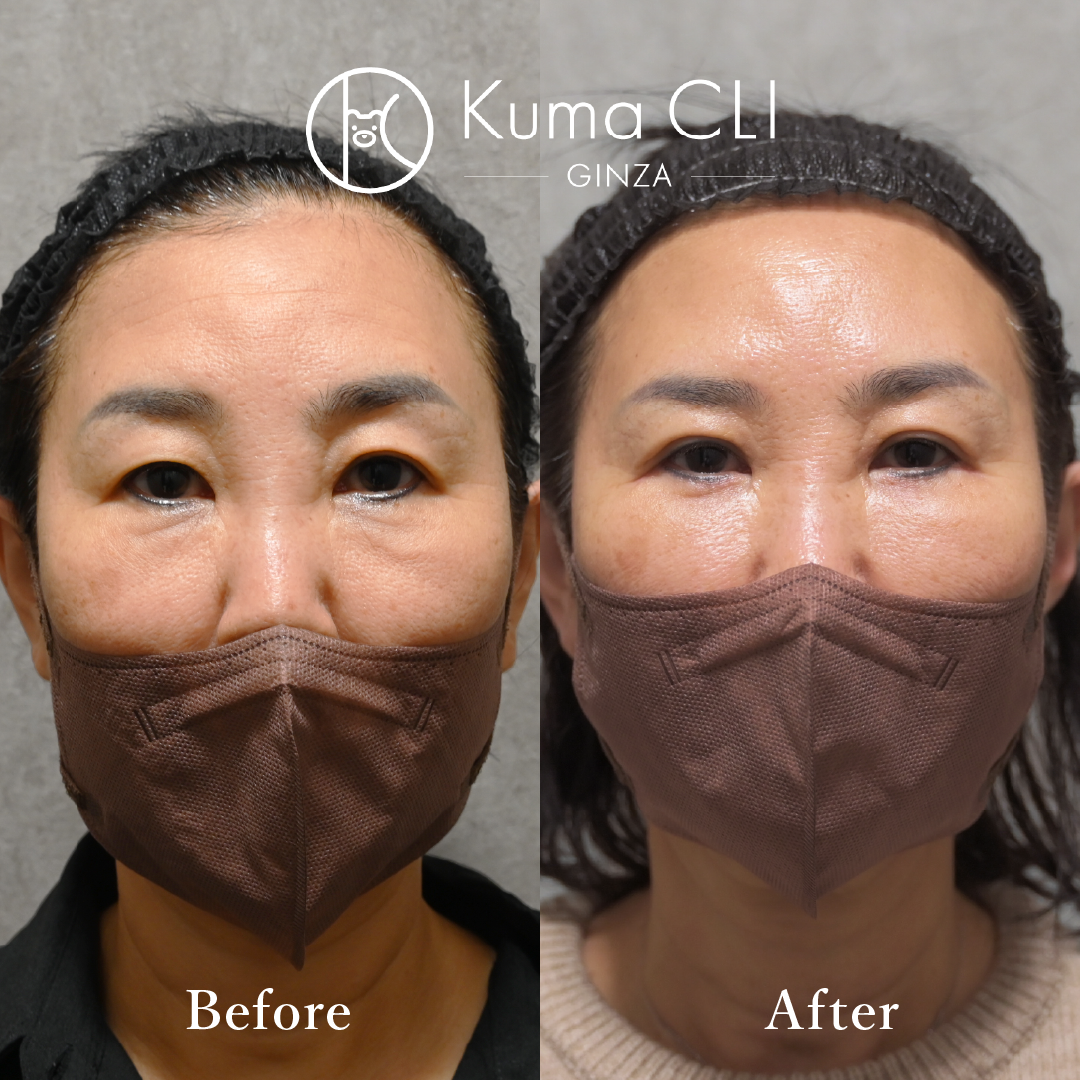
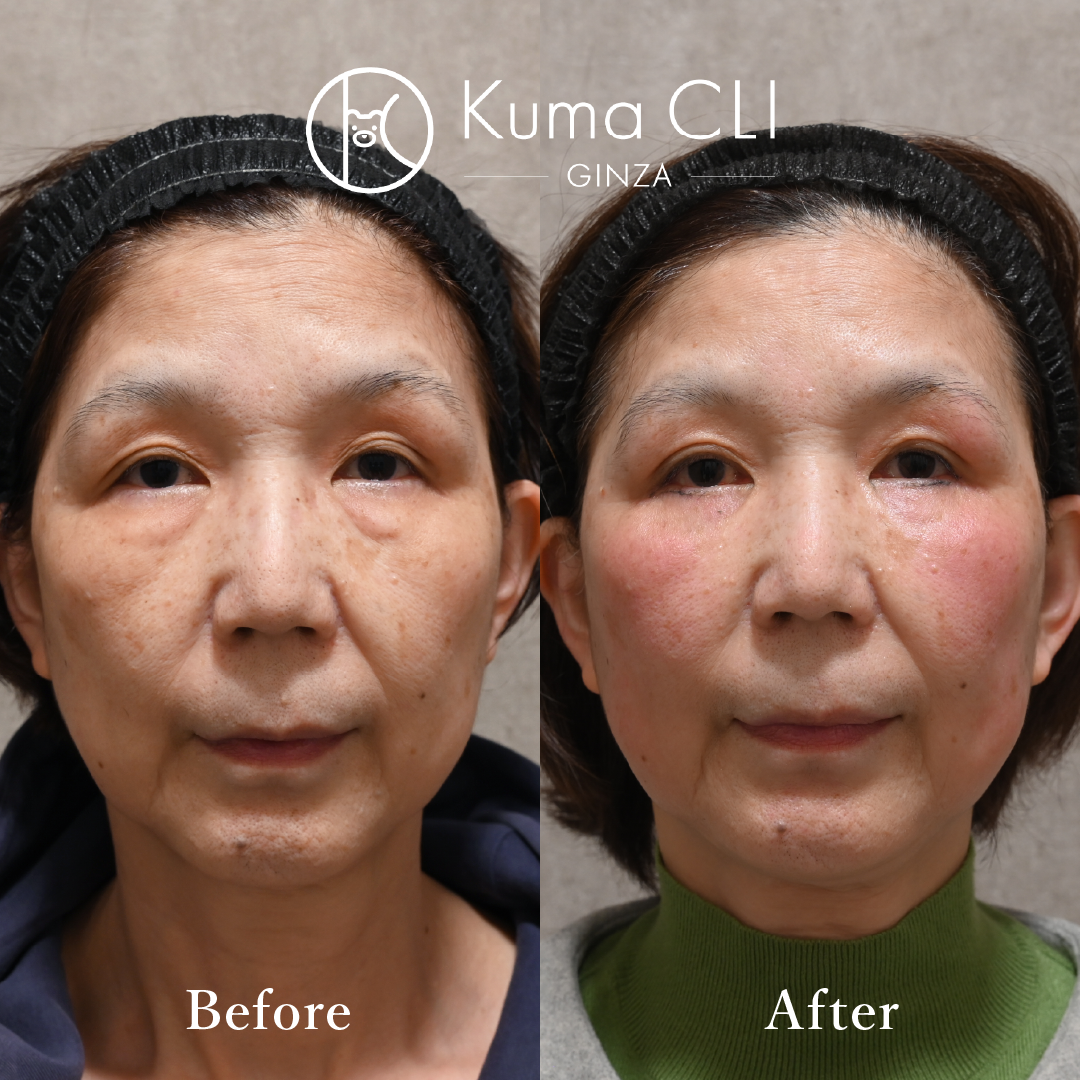
If you are concerned about under-eye dark circles,please feel free to consult us for a counseling session first.
Procedure Flow of Subciliary Orbital Fat Repositioning evo
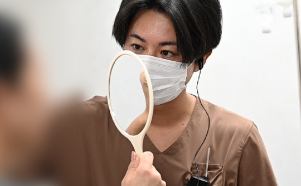
After the design is drawn, we will explain the design and the treatment flow for the day.
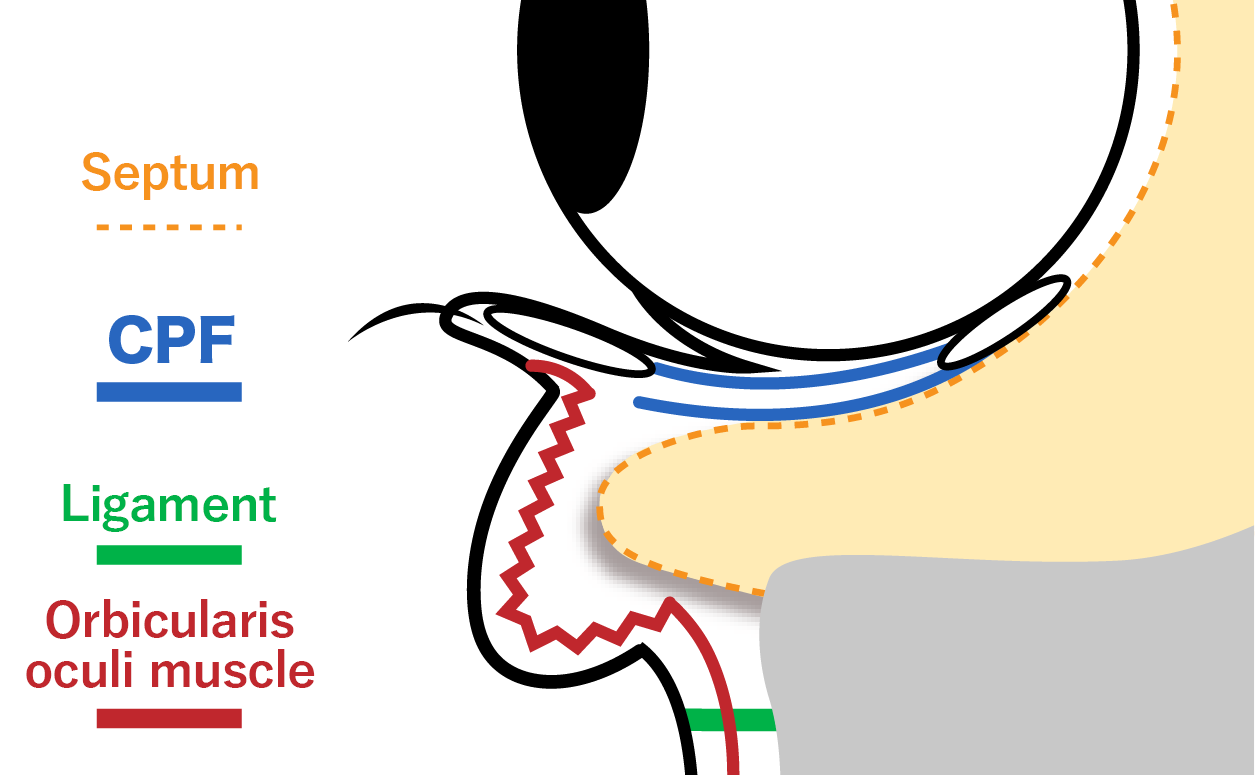
View of the eye area from the side
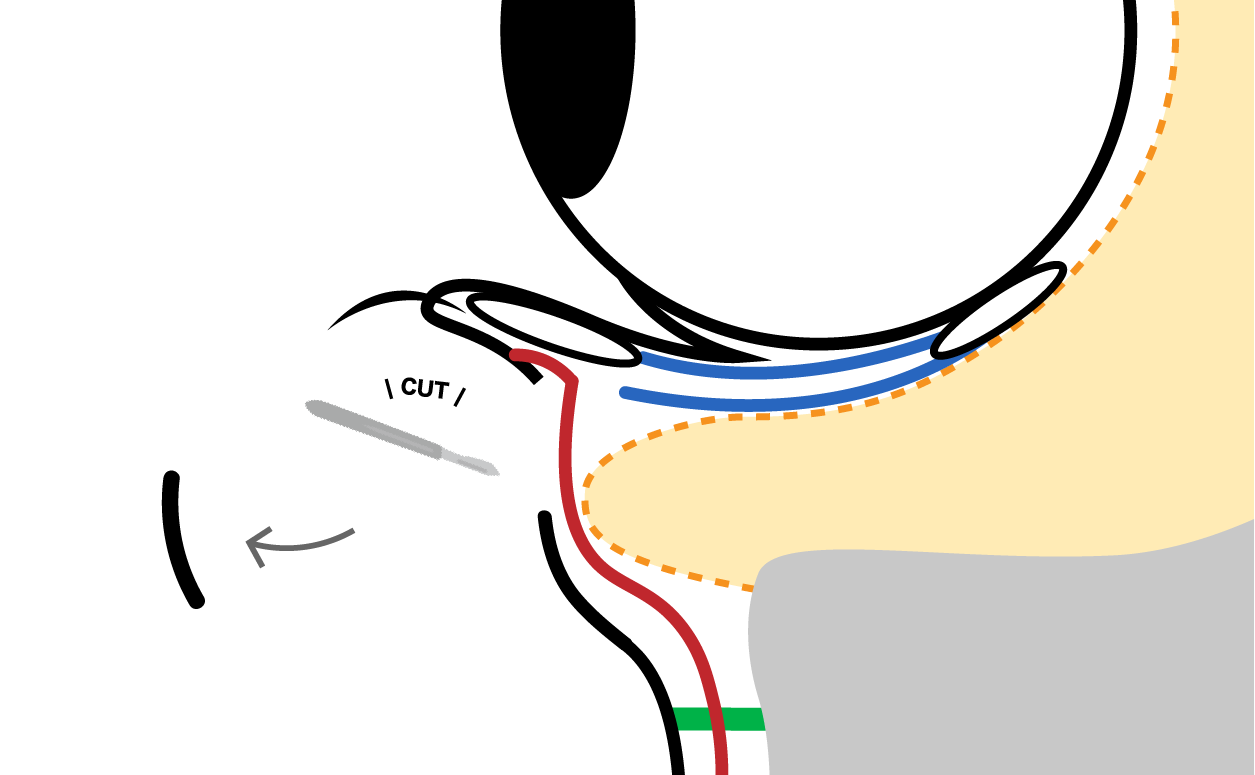
An incision is made in a discreet area near the lower eyelashes, and the sagging excess skin is carefully removed.
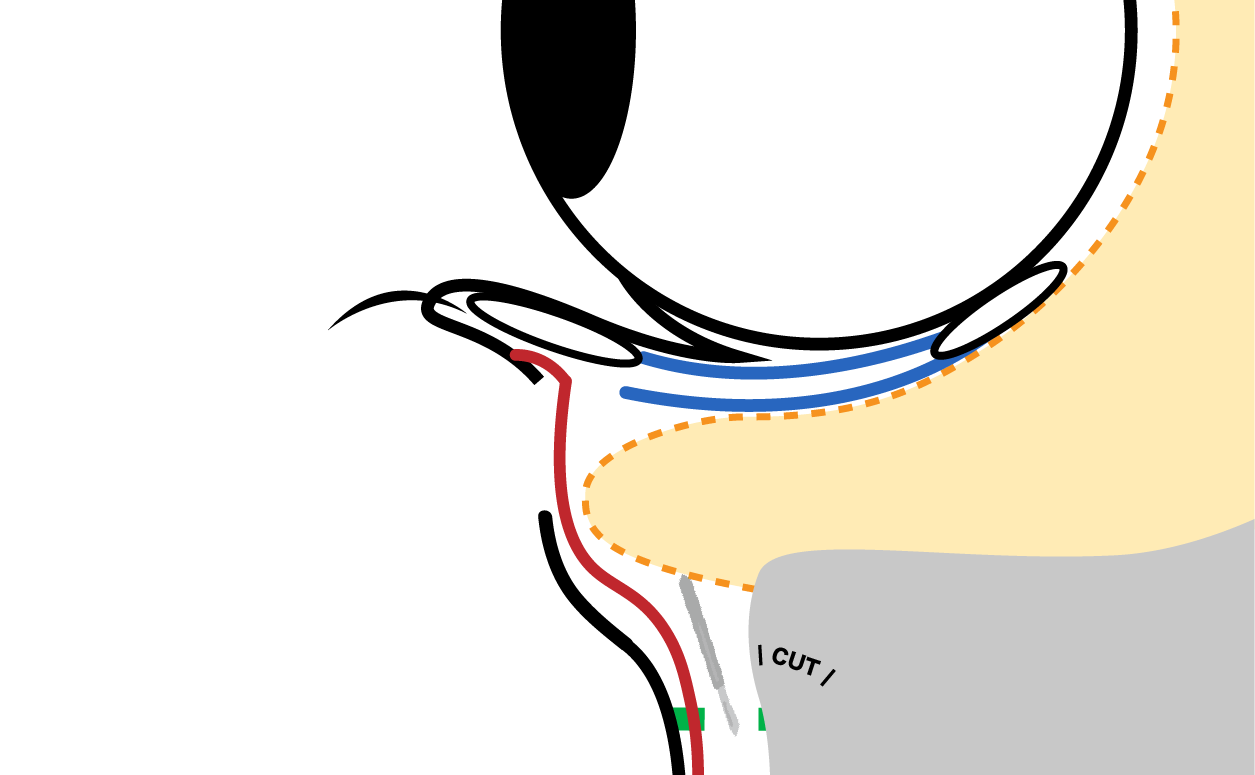
The orbital septum is opened, and the orbital fat flap as well as the composite flap of the septum and anterior leaflet of the CPF are carefully created.
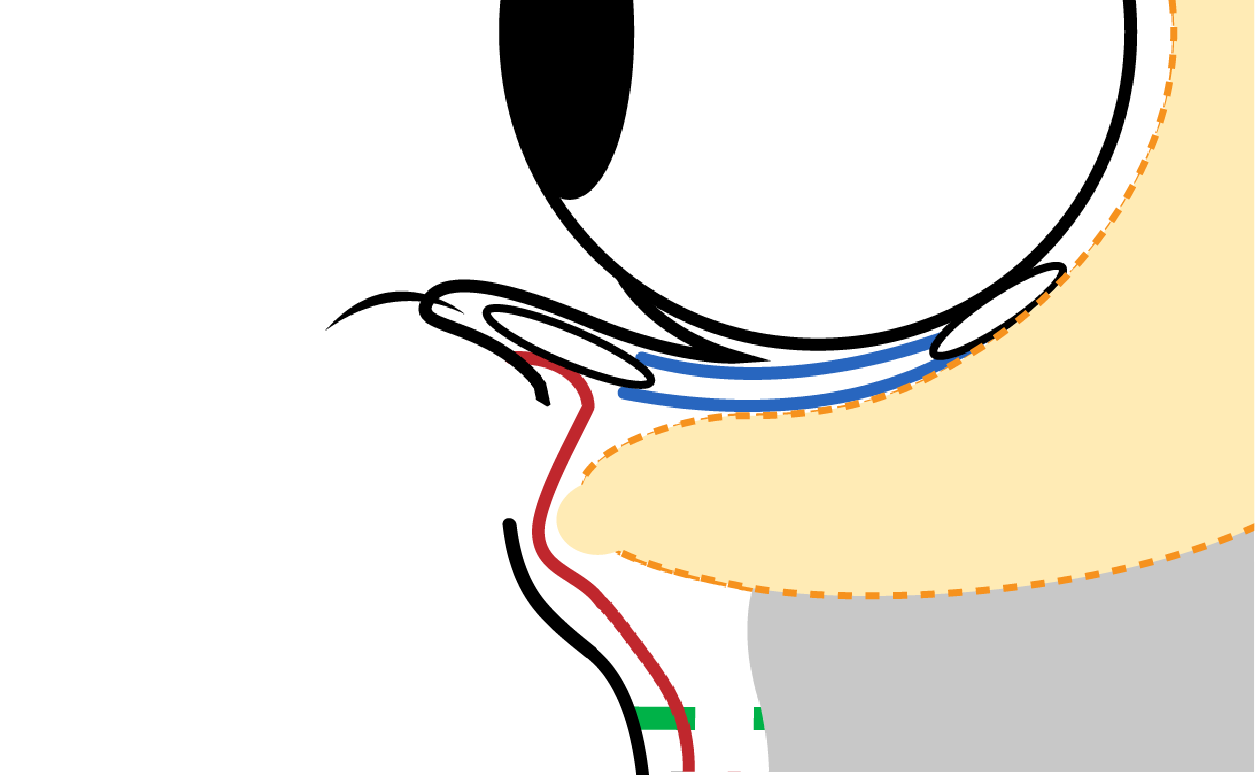
The orbital fat is repositioned beneath the dissected ligament and secured with absorbable sutures. Over time, the fat adheres in this new position, and the sutures are absorbed, completing the procedure.
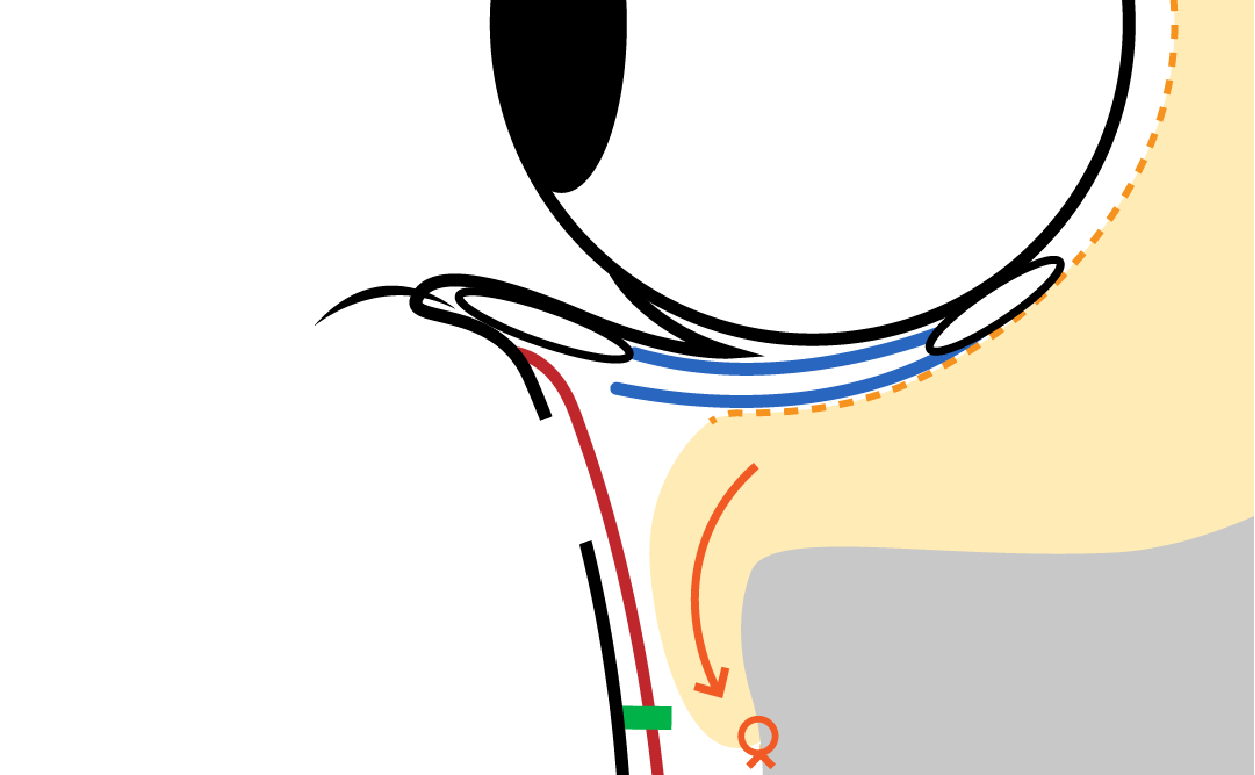
Next, the composite flap of the septum and anterior leaflet of the CPF is sutured along the orbital rim. This step is key for preventing recurrence. (Side view illustration)
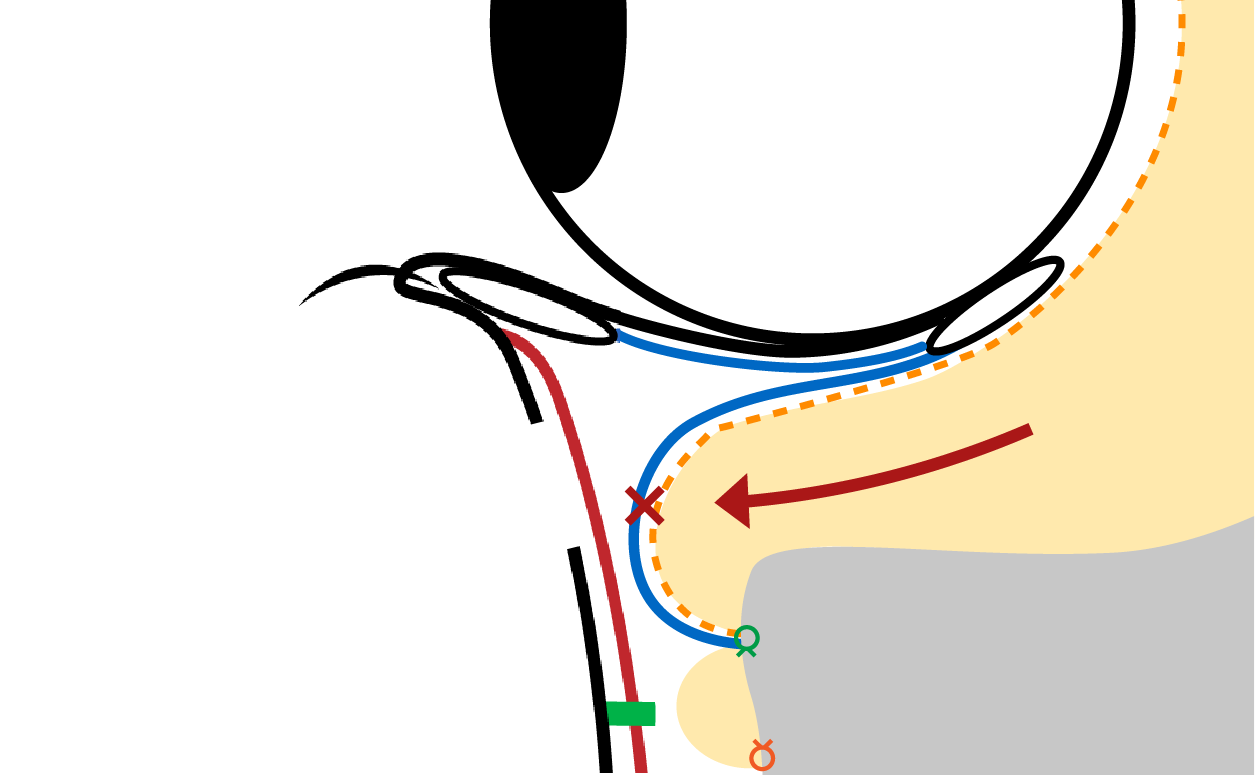
Next, the composite flap of the septum and anterior leaflet of the CPF is sutured along the orbital rim. This step is key for preventing recurrence. (Front view illustration)
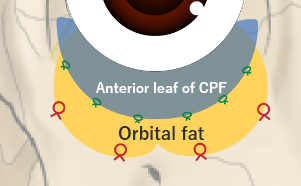
Next, the composite flap of the septum and anterior leaflet of the CPF is sutured along the orbital rim. This step is key for preventing recurrence. (Front view illustration)

Finally, the skin is sutured to complete the procedure.
| Subciliary Orbital Fat Repositioning | Regular Price ¥600,000~ |
|---|
Postoperative Course of Subciliary Orbital Fat Repositioning evo
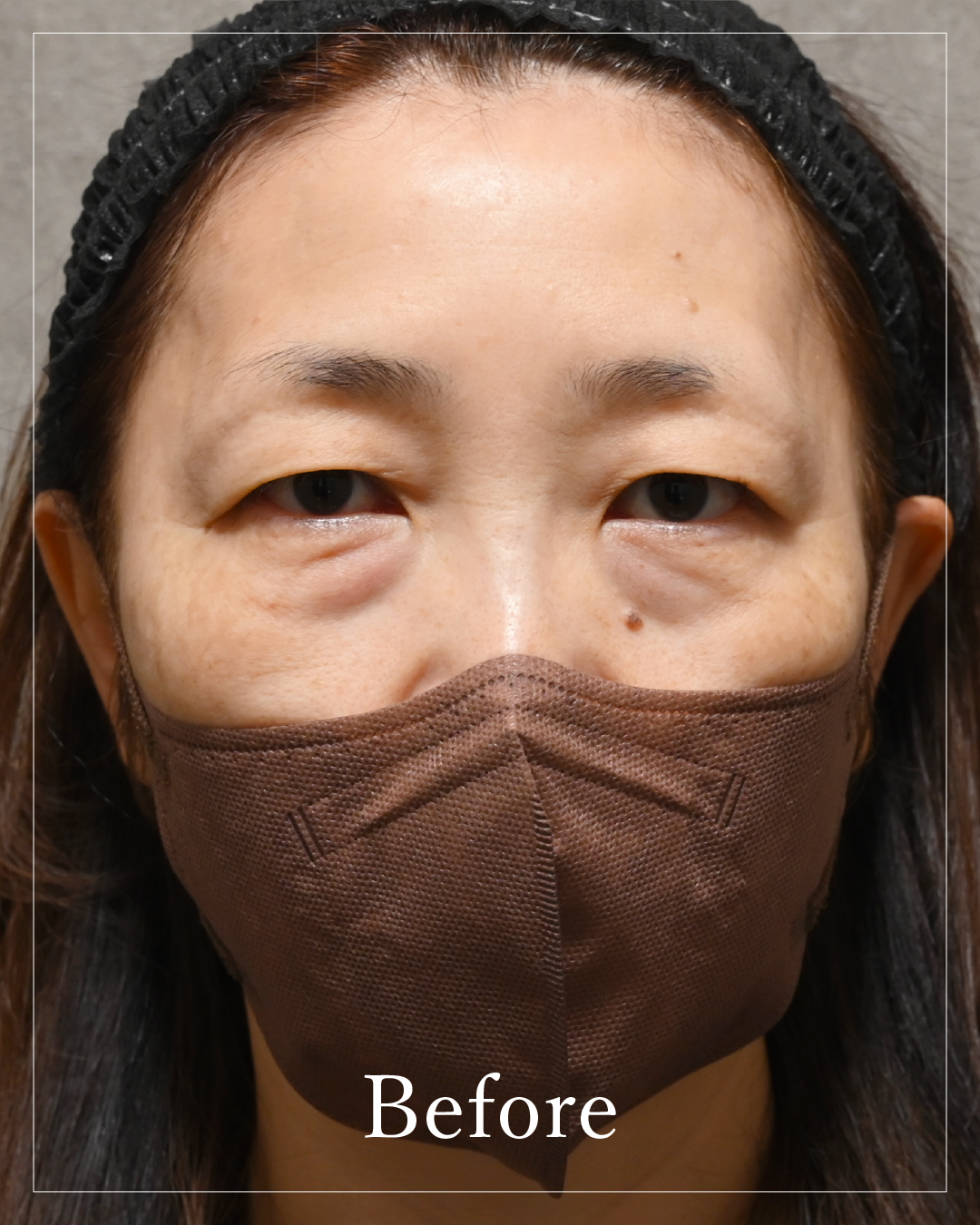
If the under-eye area shows obvious loss of firmness or leaves an indentation when pinched,Subciliary Orbital Fat Repositioning should be considered.
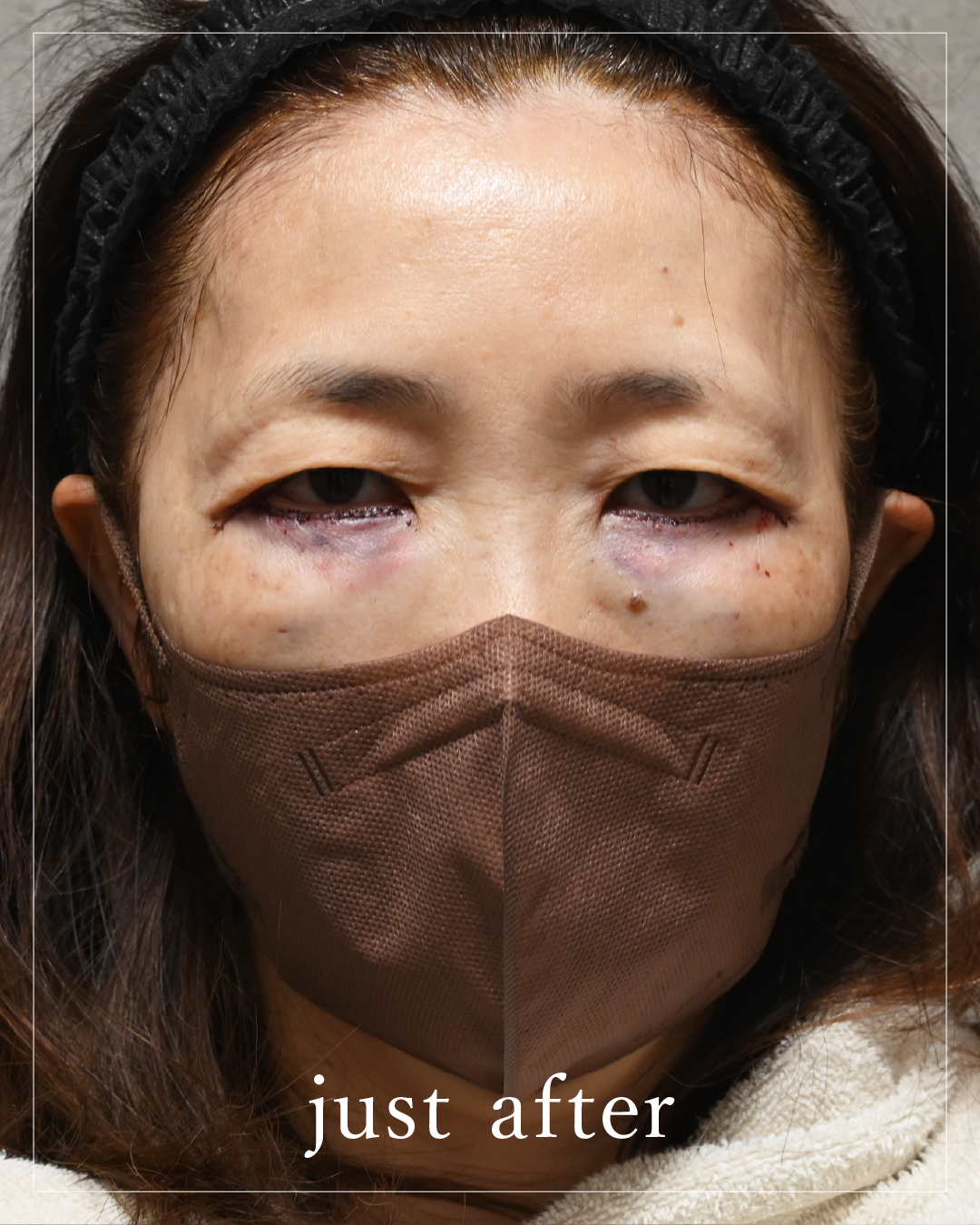
Swelling becomes noticeable within about 30 minutes after the treatment.
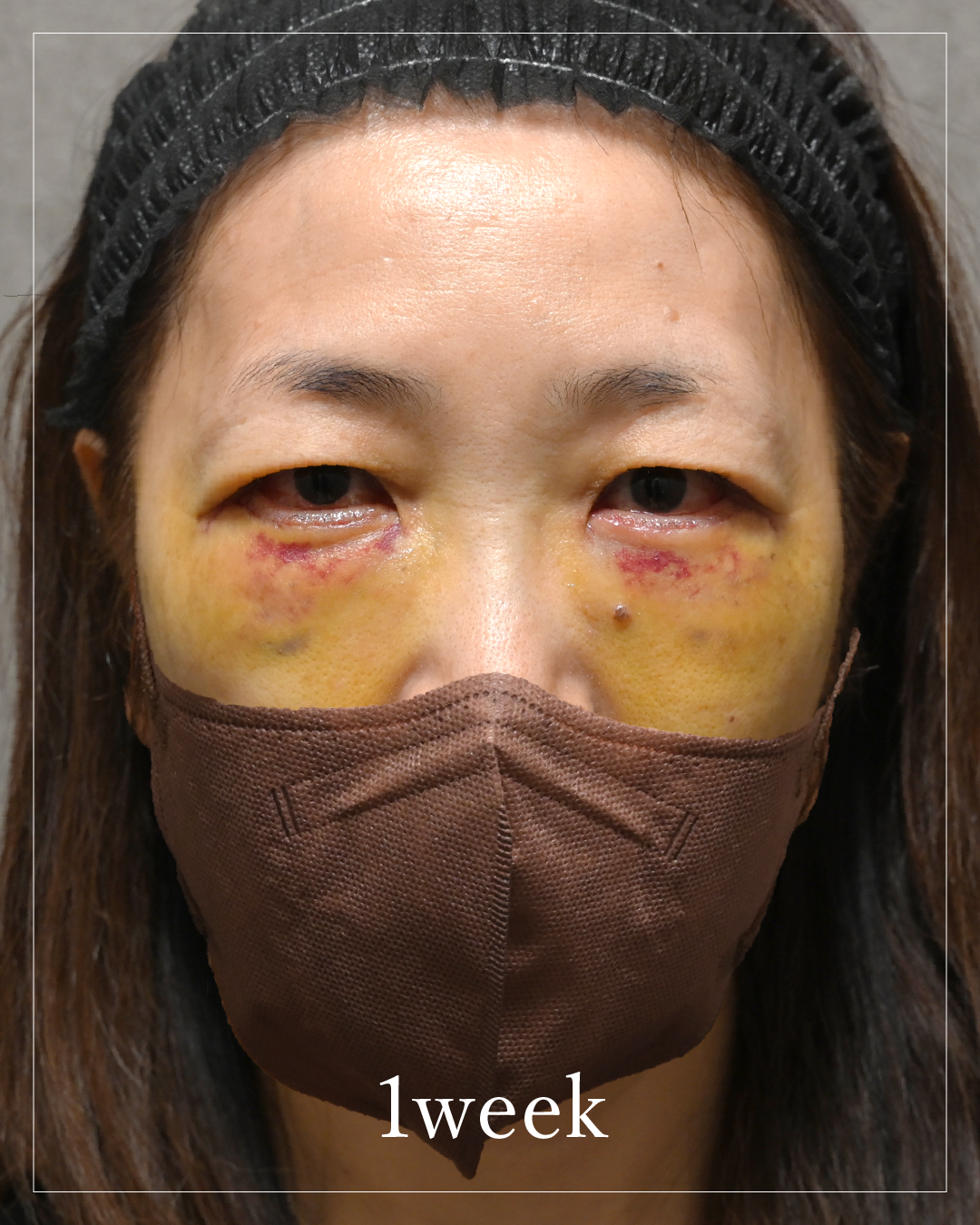
This is the time when stitches are removed. The downtime is still ongoing, and it generally takes about 1.5 to 2 weeks for things to settle. The incision scars become much less noticeable after around 2 weeks.
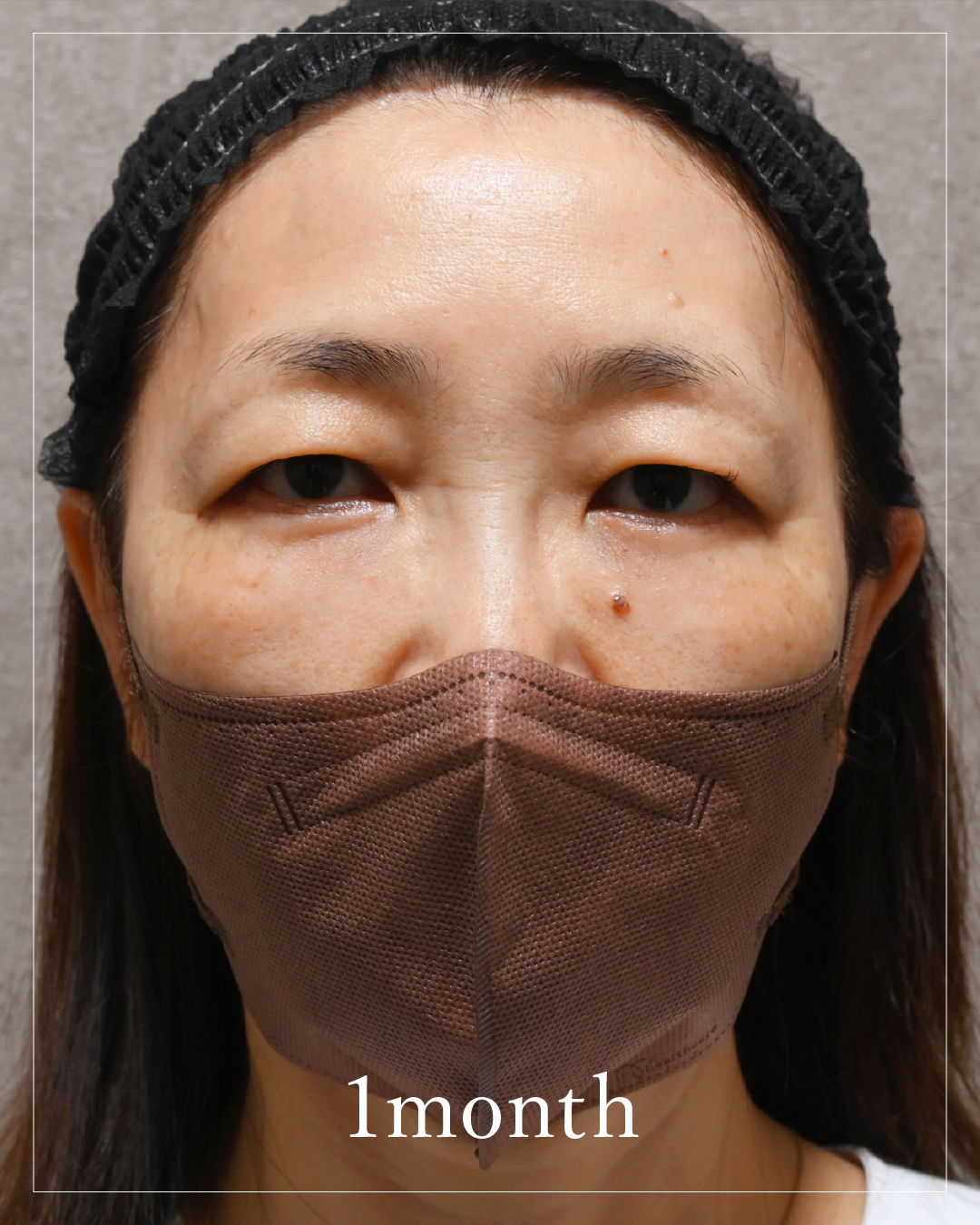
From about 2 weeks onward, makeup can sufficiently cover the area, and by 1 month, daily life without makeup is no problem. However, this is the peak period for contraction. You may feel tightness, discomfort, or a temporary accentuation of drooping at the outer corners of the eyes.
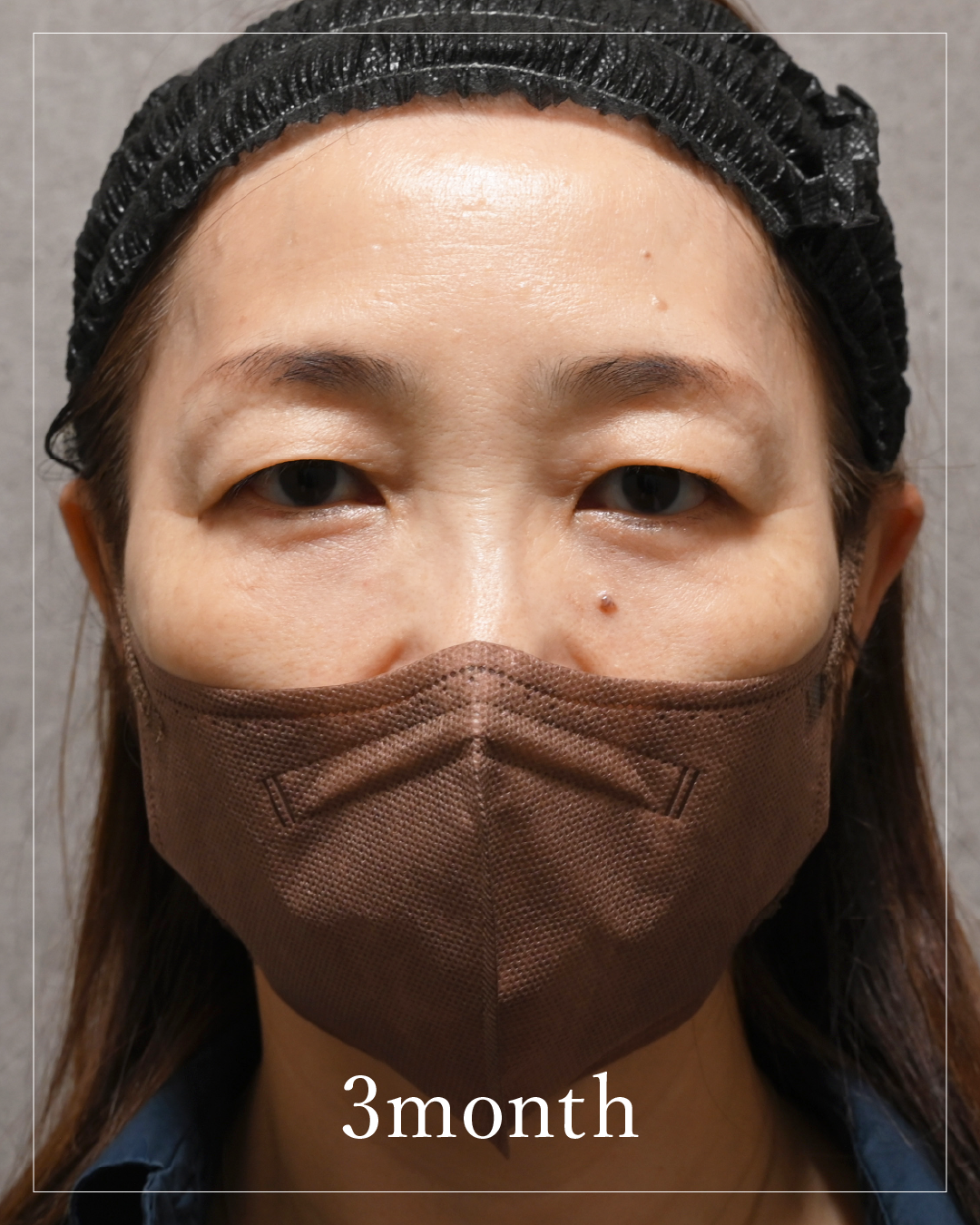
For some, this is the stage when results are complete, but for others, there may still be some stiffness. At this point, many people are already quite satisfied with the appearance.
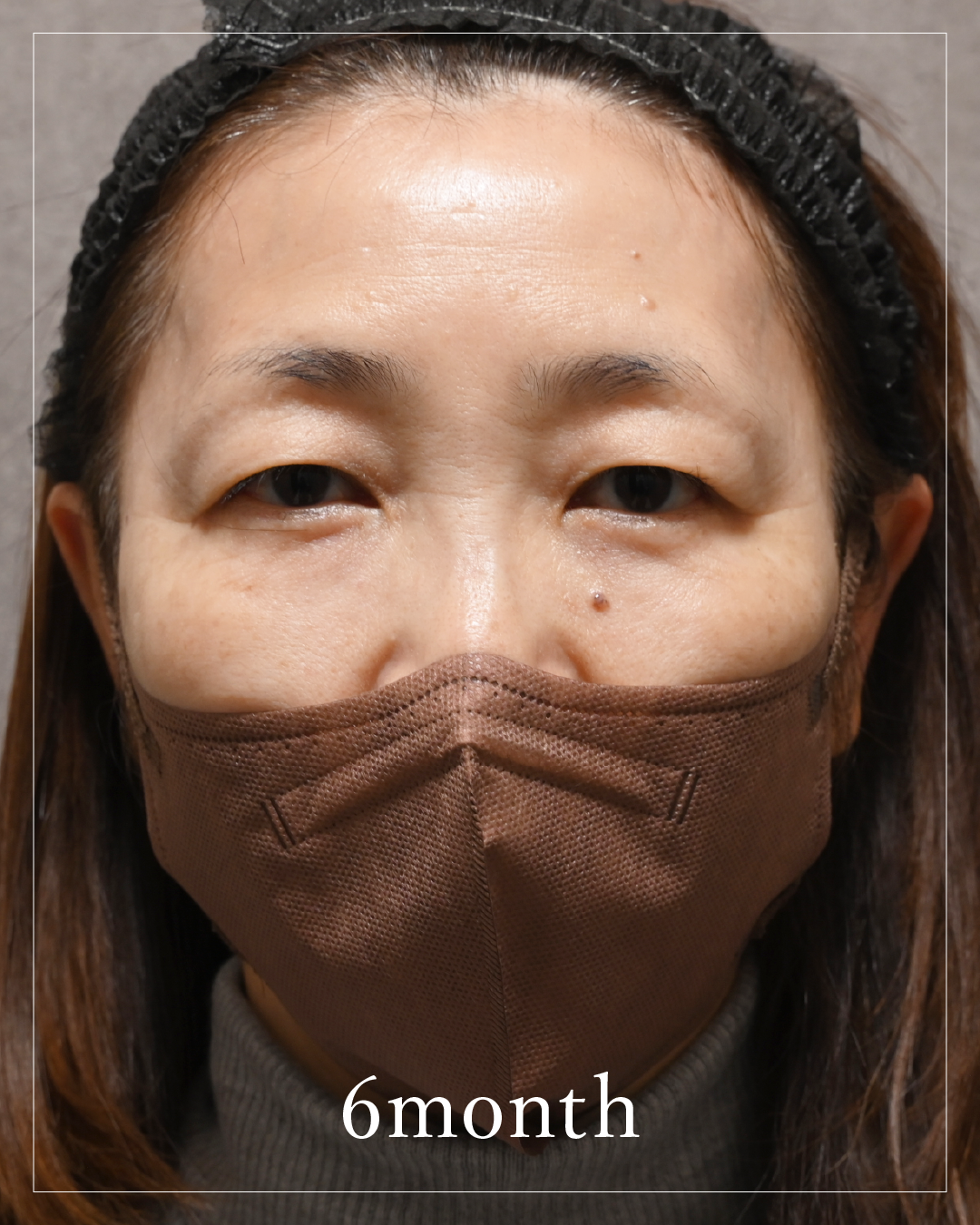
For most people, this is when the results are complete. Any stiffness has usually almost completely resolved by this time.
| Procedure time | About 1.5 hours |
|---|---|
| Stitch removal | 1 week |
| Follow-up | Please contact us via official LINE if you have concerns. |
| Makeup | For areas other than the eyes, it is possible from the day of the procedure. After the stitches are removed, makeup can be applied everywhere. |
| Shower/Bathing | Possible from Day 2. |
| Anesthesia | safe anesthesia, nitrous oxide, local anesthesia |
| Pain | Pain medication prescribed until peak subsides. |
| Bruising | About 2 weeks |
| Risks and Side Effects | Swelling, bruising, irregularities, lumps, pigmentation, double vision, hematoma, scarring, ectropion/entropion. |
| Postoperative care | Please rest for 2 days to reduce the risk of hematoma. |
Frequently Asked Questions about Subciliary Orbital Fat Repositioning evo.
If you are concerned about under-eye dark circles,please feel free to consult us for a counseling session first.


